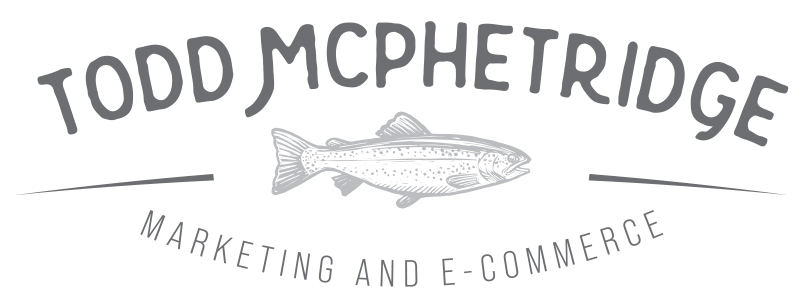Local Marketing Consultant
Omni retailers can turn proximity into profit. When store inventory is synced to ads and pickup options are obvious, nearby shoppers convert faster and payback shortens. This guide shows how to use local inventory ads, pickup extensions, and smart ad scheduling to turn local intent signals into same-week revenue and measurable ROAS lift.
Why local intent pays back faster
- Higher intent: queries that include “near me,” “in stock,” or “pickup today” convert with fewer steps.
- Shorter distance to value: pickup reduces shipping costs and uncertainty. This improves contribution and customer satisfaction.
- Inventory advantage: showing real availability increases trust and reduces wasted clicks to out-of-stock pages.
Signals that should change your bids
- Geo radius: 3 to 10 miles in dense areas. 10 to 25 miles in suburban or rural areas.
- Time of day: open hours get bid priority. After hours shift to research terms and softer retargeting.
- Pickup promise: same day or next day toggles a higher intent score for Shopping and Search ads.
- Device: mobile users near a store get elevated bids and shorter ad copy that highlights pickup.
Account structure for local inventory ads
Keep the architecture simple so teams can maintain it during busy weeks.
- Separate campaigns for local: create a Shopping campaign family that only targets store-enabled inventory. Use location targeting around store coordinates.
- Use product groups by inventory health: custom label values such as overstock, normal, and low stock. Push overstock with stronger bids. Throttle low stock to avoid bad experiences.
- Pin pickup visibility: enable pickup annotations and link your local product inventory feed with accurate store IDs.
Pickup extensions and what to show in copy
- Search ads: add location extensions and pickup extensions together. Headlines should include “Pickup today” when allowed by policy and true for the SKU.
- Shopping ads: rely on native pickup badges. Ensure the landing page displays store selection, pickup time window, and price parity.
- Store pages: add a compact module with address, hours, phone, and inventory highlights for the clicked products.
Inventory sync that customers can trust
Accuracy creates profit. Inaccuracy creates returns and support tickets. Use these rules to keep trust high.
- Update frequency: push local inventory multiple times per day. Peak seasons may require hourly updates.
- Parity checks: price in feed must match shelf and online PDP. Show taxes and any pickup fees before checkout.
- Hold logic: reserve units for pickup orders for a fixed time. Display the window clearly on page and in confirmation.
- Substitution rules: for consumables or variants, show acceptable substitutes with confirmation required.
Ad scheduling for store traffic
Bid to real behavior rather than a flat line.
- Open hour acceleration: raise bids 20 to 40 percent during store hours with the strongest lift in the final two hours before closing.
- Weekend bias: categories with quick need see more local intent on Saturday and Sunday. Increase budgets and expand radius slightly if staff can handle pickup volume.
- After hours plan: reduce local bids and promote delivery or ship-to-store for next day pickup.
Landing paths that convert local shoppers
| Entry | Best Landing | Must Include | Primary Metric |
|---|---|---|---|
| Shopping: “in stock near me” | Local store PDP | Store selector, pickup time, stock count indicator, price parity, map link | Add to cart with pickup selected |
| Search: “pickup today [product]” | Store availability page | Nearest store preselected, alternatives within 10 miles, hours, phone | Click to reserve or buy online |
| Search: “nearby [category]” | Local collection page | Top sellers in stock, filter by store, pickup promise, price range | Product clicks and cart starts |
Measurement that proves ROAS lift
- Local segment ROAS: report Shopping and Search with location-based segments and store-enabled clicks.
- Pickup attach rate: percent of local clicks that select pickup at checkout. Track by store and category.
- Lead time to pickup: average time from click to pickup. Lower times correlate with better repeat intent.
- Cancellation rate: monitor by store and inventory health label. High cancel rates signal sync issues or overpromising.
- Cohort payback: day 7 and day 30 revenue per local buyer to show faster cash recovery vs shipped orders.
Local playbook for the first 14 days
- Day 1: audit data feeds and store IDs. Confirm store hours, phone numbers, and pickup policy on-site.
- Day 2: enable location and pickup extensions in Search. Turn on local inventory ads for the top two categories only.
- Day 3: create custom labels for inventory health and margin tier. Route bids to overstock and high contribution items first.
- Day 4: build local collection pages with in-stock filters and pickup promises above the fold.
- Day 5: set ad schedules by store hours. Apply radius by store density.
- Day 6 to 7: QA price parity and pickup windows across five stores. Fix mismatches.
- Week 2: expand stores after the first readout. Add call extensions for service-heavy categories. Start holdout tests where possible.
Holdout and incrementality ideas
- Geo split: alternate weeks where a subset of stores run local inventory ads while others remain standard. Compare pickup attach rate and local ROAS.
- Time split: run pickup extensions only during open hours for half of stores. Evaluate lift in click to pickup during those windows.
- Radius test: compare 5 miles vs 10 miles for dense markets to find the curve where returns and cancellations rise.
Checklist for store teams
- Set an in-store pickup service level and post it online.
- Designate a pickup lead and a backup per shift.
- Use a simple script for substitutions and delays.
- Place signage and a QR poster that links to the local collection page.
Common pitfalls and fixes
- Out-of-date hours: sync store hours to ads and the site. Add holiday overrides two weeks early.
- Inventory drift: stale counts create cancellations. Increase feed frequency and add a low stock guardrail.
- Pickup not visible: badge or extension is missing on mobile. Check policy compliance and landing modules for small screens.
- Wrong radius: too wide increases cancellations. Too narrow limits reach. Test by store type and adjust quarterly.
Scorecard to run weekly
- Spend and revenue from local inventory ads and pickup-enabled Search.
- Pickup attach rate and cancellations by store.
- Contribution per order for pickup vs shipped.
- Inventory health mix in ad clicks by custom label.
- ROAS and payback comparison for local segments vs standard segments.
FAQ for omni retailers
Do local inventory ads help when stores are far apart
Yes. Widen the radius, emphasize ship-to-store, and schedule bids when phones and chat are staffed.
What categories benefit most
Consumables, seasonal items, parts and accessories, and any product with urgent need or size uncertainty.
How do we avoid price conflicts
Lock parity rules. For unavoidable store exceptions, exclude those SKUs or stores from local campaigns until the price aligns.
Can pickup hurt in-store sales
Not if you treat pickup as a convenience feature. Add thoughtful cross-sells in the pickup confirmation and on the pickup page rather than pushing aggressive upsells at the counter.
Get a Local Search Checklist
If you want a fast rollout plan, request a local search checklist from an expert marketing consultant. I will map local inventory ads setup, pickup extensions, geo and schedule rules, inventory labels, and store readiness steps. Expect a practical plan that improves nearby conversion and produces measurable ROAS lift inside two weeks.

















